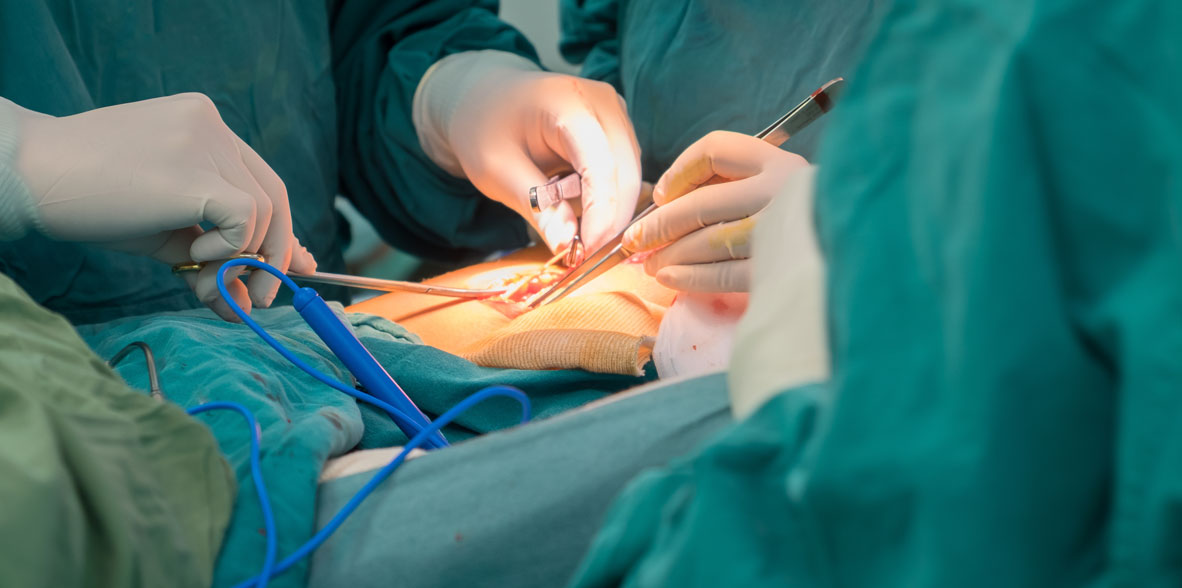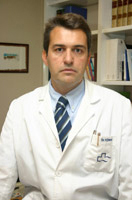

 Centro Médico Teknonen/health-centers/centro-medico-teknon
Centro Médico Teknonen/health-centers/centro-medico-teknon
Anal fissure is a longitudinal tear that appears in the most distal portion of the anal canal. Its most frequent location is the posterior midline (90-98%), another less common location is the anterior midline (12% of those that appear in women and 7% in men). It has an equal incidence in both sexes and is more frequent in the middle age of life. Most are of unknown origin. The most likely explanation is acute trauma to the anal canal during defecation (large hard stools) and rarely by the explosive expulsion of liquid feces. The fact that the posterior wall of both the subendothelial and sphincter spaces are less vascularized makes them more vulnerable to the location of fissures. The passage to chronicity is due to both sphincter hypertonia and ischemia.
The presence of multiple fissures or in places other than those mentioned forces us to rule out diseases such as ulcerative colitis, Crohn's disease, tuberculosis, syphilis, immunodeficiency syndrome ... (Keep in mind that more than half of fissures secondary to inflammatory bowel diseases occur in the posterior midline and are painful).
- Classification
The classification is more a function of the aspect than the time of evolution (although some authors consider that after 8-12 weeks of evolution the fissures should be considered chronic.) ; Acute. They are characterized by being a superficial tear with clean edges; Chronicles. They are characterized by being a deep tear with an ulcer of indurated edges in whose bed the fibers of the internal anal sphincter can be seen and usually accompanied by an indurated skin fold at the distal end (sentinel hemorrhoid) and a hypertrophic papilla at the proximal edge (Lane polyp).
- Diagnosis
Clinic
Anal pain with defecation of lacerating and very intense characteristics. This pain is maintained for a while and decreases progressively, disappears between several minutes and two or three hours, often the pain evolves in a three-stroke rhythm (it is absent or mild during defecation, almost disappears during a period of time ranging from five minutes to two hours and then increases in intensity, It can last several hours), in general it does not persist during the night although sometimes a fugax proctalgia may appear. Red, bright and usually small blood rectorrhagia (usually impregnated toilet paper when cleaned) and does not mix with feces, appears with efforts to defecate or with defecation. Other symptoms are pruritus and muco-purulent discharge that usually appear in the chronic phase of the lesion.
Inspection
It must be done with great care because given the hypertonia of the canal it is very painful. The patient is placed in the left lateral decubitus position (Sims position), the margins are separated and the patient is asked to perform a Valsalva maneuver (many times it is necessary to previously apply topical anesthesia or oral analgesics). Digital rectal examination is contraindicated due to the risk of vaso-vagal syncope and even cardiac arrest; If it could be done, it would demonstrate hypertonia of the sphincter. Anuscopy and rectoscopy are only necessary when a secondary fissure is suspected.
- How to treat it?
Keep in mind that 50% or more heal spontaneously.
In acute fissures of a few days of evolution, conservative treatment is initially applied that is aimed at increasing and softening the fecal bolus (dietary fiber, oval and / or lactulose seedling, alcohol-free diet, coffee, spicy, seafood, chocolates ...) and reduce the spasm and irritation of the anal sphincter. For this, sitz baths with warm or hot water after defecation, washes with neutral soaps, pressure drying without toilet paper and ointments with local anesthetics and / or corticosteroids (2% lidocaine and / or 2% hydrocortisone) can be used. These treatments can cause loss of skin sensitivity, irritation, allergies, etc., and are contraindicated in cases of infection. These treatments relieve the symptoms, without it being proven that they influence the healing time. In case of poor evolution or chronicity and before the surgical option, a 0.2% nitroglycerin cream can be used, 2 times a day or 1% isosorbide dinitrate cream, 5 times a day. It is a controversial treatment since the efficacy found varies from one study to another (in some they are given an efficacy similar to surgery and in others to placebo). The type of formulation used, the amount used and the time of use can be an explanation for these discrepancies.
Treatment with nitroglycerin ointment could be started with 500 mgrs. 2 times a day at a concentration of 0.2% and according to results increase it to 5%. A 2% gel is pending commercialization in Spain, a higher concentration can be achieved by formulation. Diluted in soft white paraffin and protected from light. Among its side effects is headache that in some cases forces to suspend treatment (it is convenient to wear gloves to apply it or wash your hands then to avoid absorption). Other therapies that are being studied are the application of Nifedipine ointment, the use of muscarinic anticholinergics (betamecol) and trimebutine (reduces smooth muscle spasm). If these treatments fail, botulinum toxin injection can be used, although the only truly effective therapy is surgical. These techniques, at the moment, are out of use in primary care. In surgery the most used technique is the internal lateral sphincterotomy (open or closed technique with local or epidural anesthesia). It produces a cure of 90% in 1-2 months. In up to 35% of cases there may be incontinence of gas or feces as a sequelae.
- What can be done if the fissure does not heal?
An anal fissure that does not respond to medical treatment should be re-examined to assess whether there is a cause that prevents scarring. Such causes include spasm of the internal anal sphincter. Those fissures that continue to cause pain and/or bleeding can be corrected with surgery.
- What is anal fissure surgery?
Surgery involves a small operation that cuts off a portion of the internal anal sphincter to allow the fissure to heal by decreasing pain and spasm that interferes with healing. The section of this sphincter rarely interferes with the control of bowel movements and can be performed by outpatient surgery.
- How long does it take to heal after surgery?
Complete healing occurs within a few weeks, but the pain goes away within a few days.
- Can the fissure appear again?
More than 90% of patients who need surgery for this problem have no more problems related to the fissure.
- Can the fissure be related to colon cancer?
No. But the persistence of symptoms should be consulted to the surgeon although there are other injuries other than the fissure that can cause similar symptoms.
Definition
Anal fissure is an ulceration of the epidermal portion of the anal canal, extending from the pectine line to the margin of the anus.



































